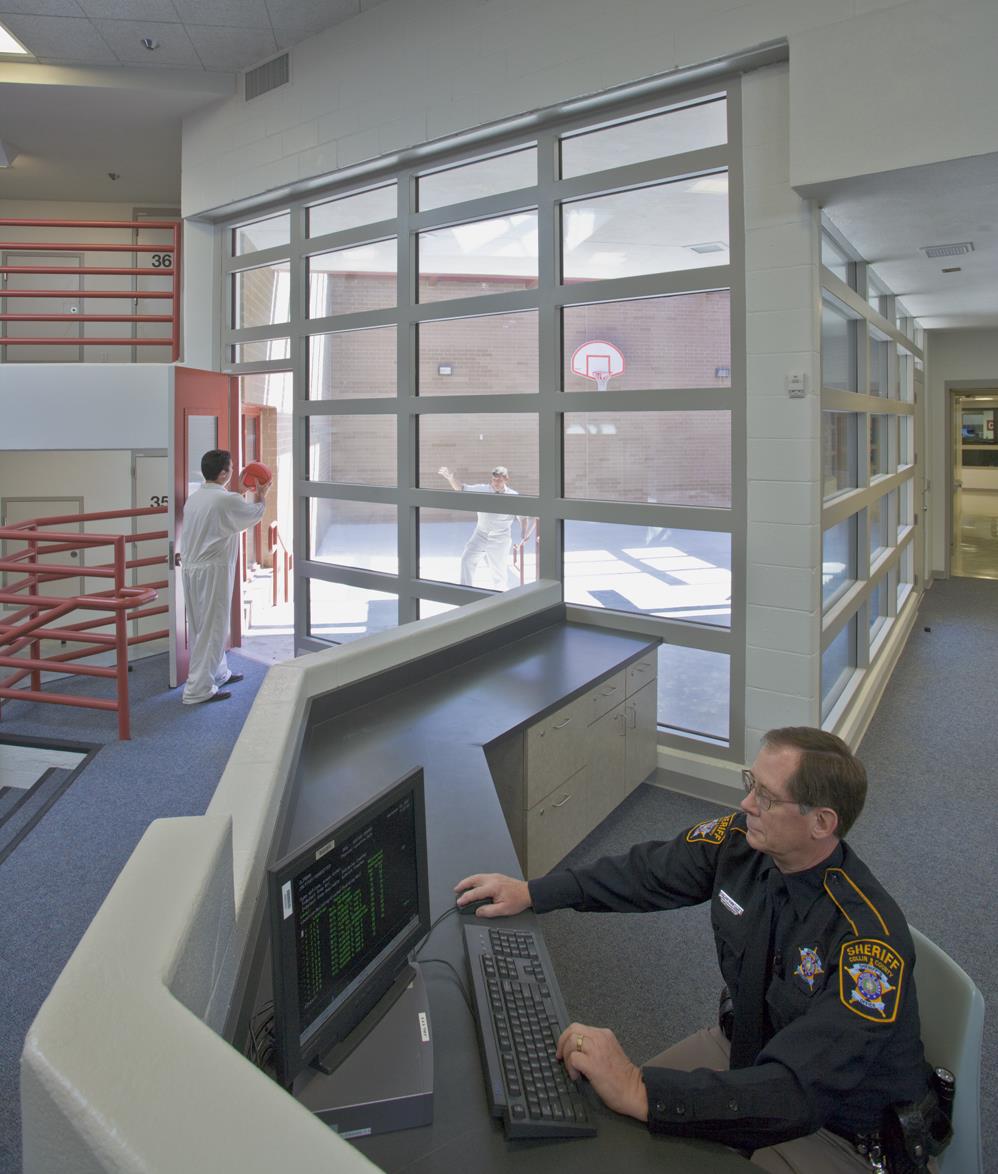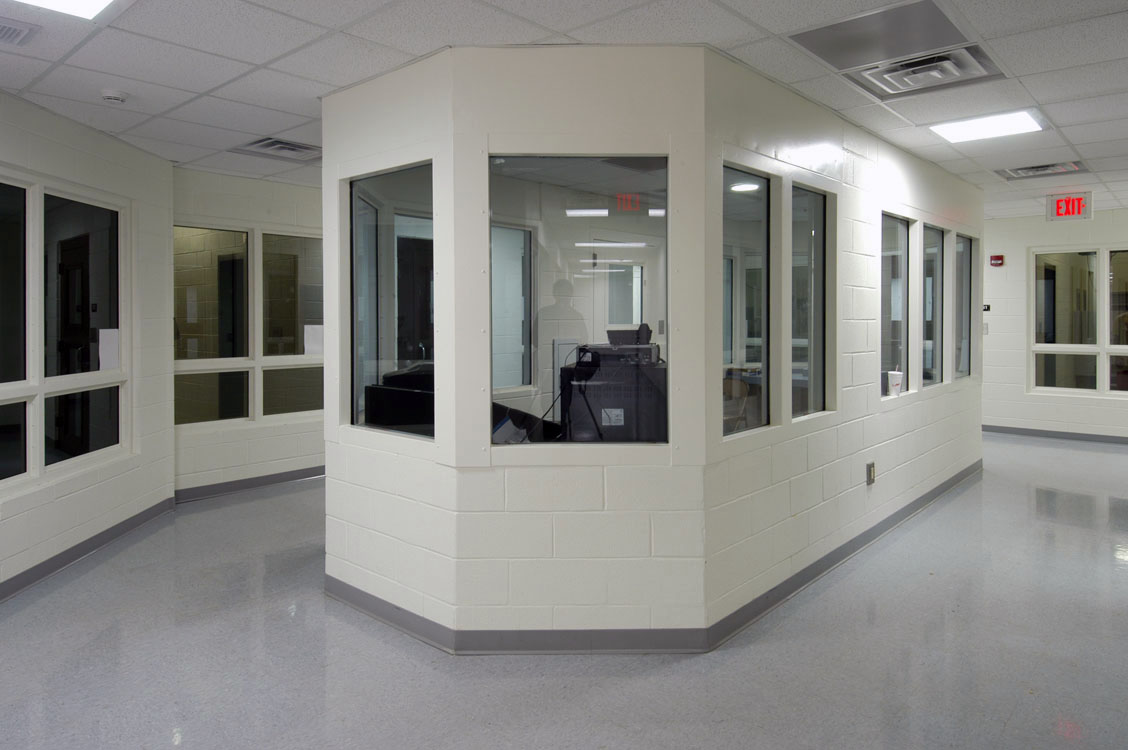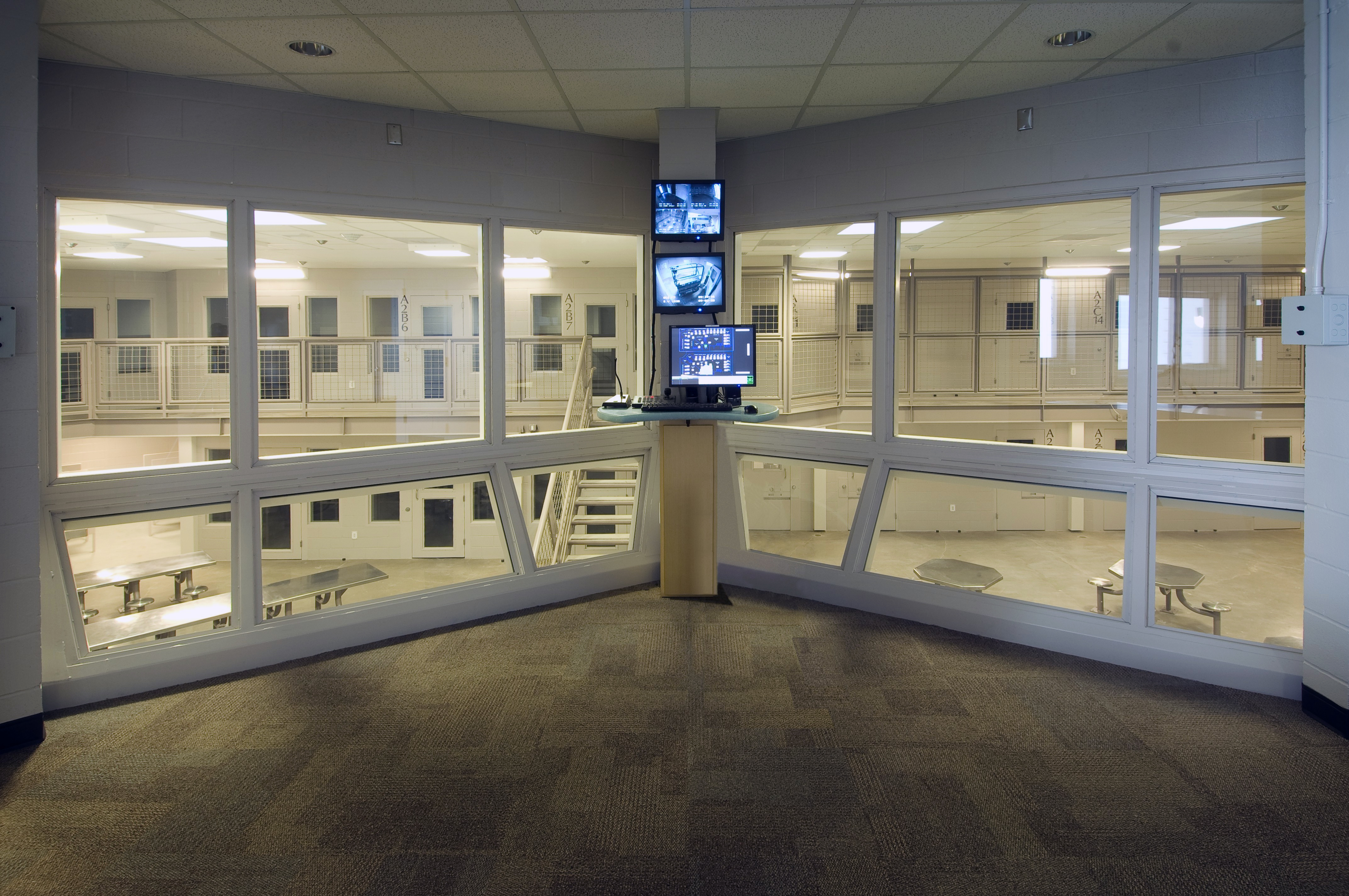Sheriffs Encourage Commissioners Court to Prioritize Jail Operations
Kelly Rowe learned a valuable lesson his first day on the job in the Lubbock County Sheriff’s Department back in 1999.
“When I first walked into the old Lubbock County Jail, which was built in 1931, I made a lot of notes to self,” recalled Rowe. “One of those notes was to tour the jail before accepting my next job. I accepted this job, and then I toured the jail. I walked into the darkest dungeon I ever saw. It was linear, dark and dirty.”
Twenty years later, Rowe is sheriff of Lubbock County, a member of the Texas Commission on Jail Standards, and the future 2021 president of the Sheriffs’ Association of Texas. As sheriff, Rowe oversees a $101 million, 1,512-bed jail that opened in 2010, where inmates are under direct supervision 24 hours a day via a contemporary podular design.
The Lubbock County Sheriff’s Department staff went to considerable lengths to communicate to the public and elected officials why a new jail was so critical for the safety of inmates, staff, and the overall community.
Jail Operations 101
In the 246 Texas counties that operate jails, the jail is both the county’s single largest budget item and its most significant liability.
Rowe and other Texas sheriffs strongly advocate that County Commissioners and Judges – those individuals who make decisions about jail funding and staffing issues – learn as much about their local jail operations as they can.
“I’m going to be blunt: The percentage of County Commissioners and Judges who have never toured their county’s jail will shock you,” said Waller County Sheriff R. Glenn Smith. “I would beg any newly elected Commissioner or County Judge to make that one of the first things on their to-do list. They should get familiar with what we’re doing.”
That recommendation is especially relevant given the large number of new County Commissioners and Judges who took office in 2019.
“They need to be educated about county jails, their operations, and their needs and requirements,” added longtime Robertson County Sheriff Gerald Yezak, immediate past president of the Sheriffs’ Association of Texas. Earlier this year, the Robertson County Commissioners Court issued certificates of obligation to fund a new $18.7 million sheriff’s office and 92-bed jail.
Staff Safety
Given the diversity of county jails in Texas, it should come as no surprise that a small percentage of them do not comply with the Texas Minimum Jail Standards.
“I’m not making excuses, but it’s hard to stay in compliance with 2019 thinking when you’ve got a facility that was based on 1980s thinking,” Smith shared. Waller County’s existing 110-bed jail was built in 1986 and is shaped like a maze, which makes inmate oversight and overall operations even more difficult than in a linear jail.

In November 2017, Waller County voters approved $39.5 million for a new sheriff’s office, court building, and jail that will double inmate capacity and is expected to open next year utilizing a design that incorporates an elevated indirect supervision model (see “design evolution” below).
“Instead of a jailer sitting in the control room looking at a camera aimed at a steel door, or walking by and looking through a 4-by-8-inch window once every hour, we will have a much more open atmosphere regarding observation and safe interaction,” Smith described. “That’s a massive change from what we have now, and I think it’s going to be better all-around for both inmates and staff.”
Rowe noted that many newer design enhancements improve not only the well-being of inmates, but also that of jail employees.
“When we gave tours of our new facility, I would always remind the public that despite the introduction of natural light, this isn’t a hotel,” Rowe said. “But our staff – the people who are here a lot longer than the inmates are – finds it a much more pleasant working environment.”
The average length of stay for inmates in Texas county jails is between 13 and 24 days, according to, Rowe, while some corrections officers work in the same facility for years.
Retaining quality employees at the county jail requires paying them a meaningful wage and giving them resources to keep them safe. Yezak recently equipped all of his jailers with body cameras and microphones to help mitigate the number of false allegations made by inmates about how jailers treat them. While taxpayers might balk at the money being spent on designing, staffing, and maintaining jails, he argued that keeping employees and inmates safe is imperative.
“All it takes in this business is one lawsuit to set you back financially for decades,” Yezak said. “The cost of properly funding a county jail, jail staffing, and jail technology can be minute compared to the payout on one single lawsuit. Every dollar invested in the county jail is a dollar invested against a lawsuit.”
Design Evolution
Jail design and operations have come a long way in Texas, even though the oldest jail in continuous operation in the United States is located in San Saba County; this facility opened in 1884 with space for up to 10 inmates.
“In older jails with long corridors, corrections officers can only see what is directly in front of them, and they are exclusively reactive to situations that arise with inmates,” Rowe explained. “With direct supervision, officers become almost exclusively proactive, and we’ve seen a significant reduction in vandalism in our jail because now inmates are never out of the officers’ sight.”

Many other existing Texas county jails were built in the 1970s and earlier based on design elements that included low ceilings, bar fronts, lack of natural lighting, and no air conditioning. The linear design which Rowe first encountered in Lubbock is common, resulting in limited observation of inmates who in turn are left to their own devices.
While linear layouts still have a limited place in modern jail design, more effective design strategies increase observation and safety for jailers and inmates. They include:
- Indirect supervision podular designs, in which jailers are positioned outside cells at a fixed station surrounded by housing units. The layout creates an intimidating “fish-bowl effect,” as jailers may feel watched by inmates.
- Elevated indirect supervision wraps housing around elevated jailers. Supervision into the cells is excellent, and one-way glass precludes inmates from knowing when the station is staffed.
- Direct supervision podular is, by far, the most effective, since jailers are located within the housing unit, Rowe said. This design strategy allows staff to interact with inmates and deter inmate misbehavior before it escalates.
Inmate Demographics
Many older jails were designed to accommodate an inmate population comprised of about 10 percent women, a statistic that held steady for decades. As that percentage increases, Texas jail architects recommend designing jails to accommodate a female population of 20 percent or more of capacity.
Of the 92 beds in the new Robertson County Jail opening in October 2020, 19 of them are designated for women, which accounts for about 21 percent of total available inmate capacity.
“When I first started working here at the Robertson County Sheriff’s office, it was a rare occurrence when we had a female inmate in jail,” Yezak observed. “When a woman would get arrested, generally she bonded out the next day. Now, I can’t tell you the last time we didn’t have female inmates.”
The death of Sandra Bland, a 28-year-old inmate who committed suicide in the Waller County jail in 2015 while in a holding cell, led to the passage of the state’s Sandra Bland Act, which mandates jails divert inmates with mental health and substance abuse issues toward treatment.
Before the law even took effect in 2017, Smith said Waller County transitioned to the electronic monitoring of inmates and installed more cameras. The new facility, currently under construction, will assist inmates with physical and mental health issues via telemental and telehealth services, which allow inmates to remotely access professional assistance via video visitation located in the housing units.
“Jails are the largest mental institutions in this country,” Smith stated. “An overwhelming percentage of people in jails have some kind of mental trauma going on. Just being in jail can cause mental stress. But I’m convinced the mental health of our inmates will be better in our new facility.”
Approximately 700 inmates in Texas county jails are awaiting acceptance into a state mental facility, according to Yezak, who accepts the duty to care for those inmates, even if by default.

“As county sheriffs, our responsibility is to house human life,” he emphasized. “We have the responsibility to keep inmates safe. It’s one of the biggest responsibilities there is in our society.”
That responsibility is what drives Yezak and his peers to encourage County Commissioners and Judges to make local jails a priority.
“Maybe we could assemble a panel of sheriffs with tenure and the Jail Commission and give a short presentation on jails at the County Judges and Commissioners conferences,” Yezak continued. “We are partners with the Judges and Commissioners in the success of county jail operations, and it works best for the people we serve when we all work together.” HH
Charles Goodman, AIA, CCHP, has been leading people since the early 1990s in the development of correctional projects for counties, states, the federal government and the Department of Defense. With nearly 30 years of experience as a justice architect, Goodman brings a wealth of design knowledge in virtually all areas of corrections. He has the unique qualifier of Certified Healthcare Professional, which provides an increased understanding of healthcare and mental healthcare needs in a correctional environment.
Flint Britton, Facilities Planner, RAS, began his 24 years of detention experience working for the Texas Commission on Jail Standards. As a planner he routinely met with county officials and architects to discuss the county’s needs and recommend solutions, and he reviewed over 200 jail plans representing 70 counties for compliance with the Texas Jail and Texas Accessibility Standards. His responsibilities include performing studies, FNAs, programming, and the planning of sheriff’s offices and jails.
By Charles Goodman and Flint Britton















